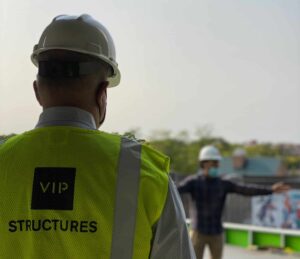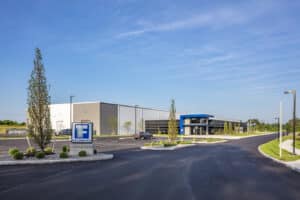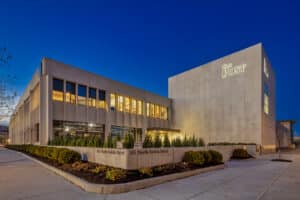Metal panel siding has been traditionally used in pre-engineered buildings (PEBs), but more and more building owners are beginning to see the benefit of using metal panel siding for all building designs. In the world of integrated design-build projects, PEBs are a systems building approach designed to maximize the use of steel matched to design conditions. A traditional or conventional steel building is designed using standard hot rolled steel, which can result in a higher overall cost. Today’s metal panel systems can range from a very basic economical panel to very high-end composite panels used on signature projects of all types.
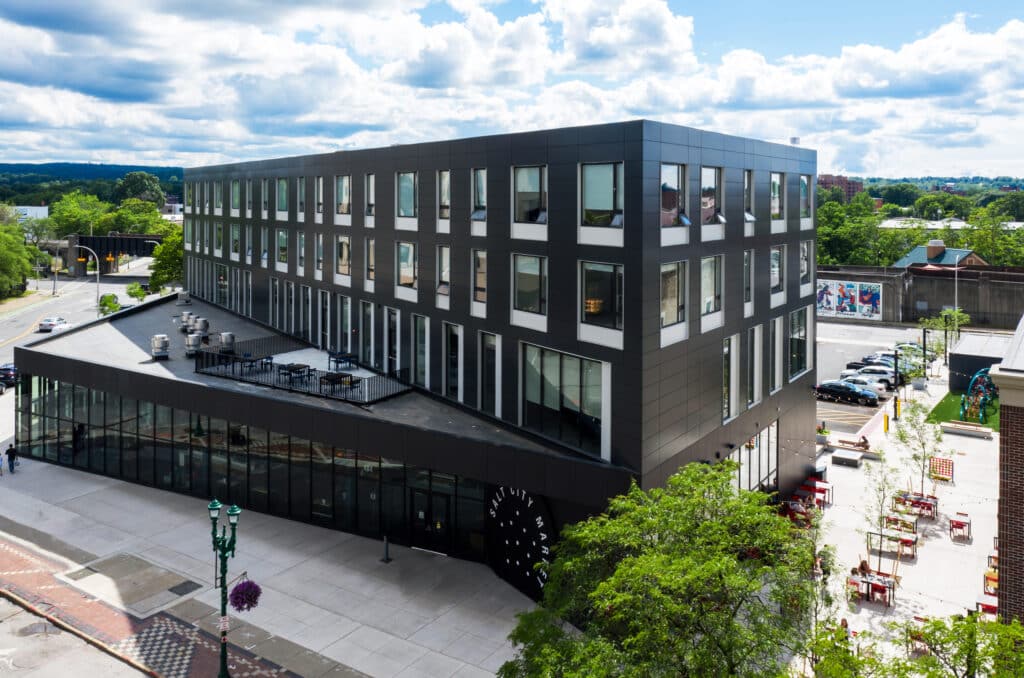
Regardless of whether metal panel siding is for a commercial office building, manufacturing, warehouse, or indoor soccer center, metal siding offers many options that can be customized to practically any budget. Increased demands of energy codes are calling for a continuous layer of insulation to provide a thermal break between the framing and the outer skin of buildings. Foam-filled metal panel systems are an excellent choice to meet that requirement.
Metal panel siding now comes in a variety of colors, giving buildings and facilities more variety when it comes to style and look. Outside of visual appeal, the benefits of using metal panel siding tell a much larger story. The long-term benefits of using metal panel siding are typically why developers and building owners alike choose this feature.
Metal panel siding is durable, low-maintenance, energy-efficient, and sustainable. Here are 4 benefits in greater detail:
Benefit 1: Superior Durability
Metal siding, especially steel, likely costs more than traditional siding. But when you compare overall benefits beyond up-front costs, you can easily find cost savings in the longevity and ROI. Durability of the metal panel siding used in PEBs and conventional buildings is likely the most obvious and glaring benefit.
Compared to other types of siding, the strength of metal can resist extreme weather such as hurricane force winds, hail, heavy ice, snow, and sleet. Those who live in Upstate New York know the extreme wear and tear our winters can have on a building.
Metal siding has stronger toughness and strength properties than most siding materials, which mean a much longer lifespan. If treated properly with coatings, it can resist signs of corrosion for years. The national average for return on investment (ROI) for metal siding is estimated to be 86%.
Finally, one of the most important properties of metal siding is its resistance to fire. A properly sealed commercial building or warehouse with metal siding can be fire resistant, unlike other materials that have higher flammability.
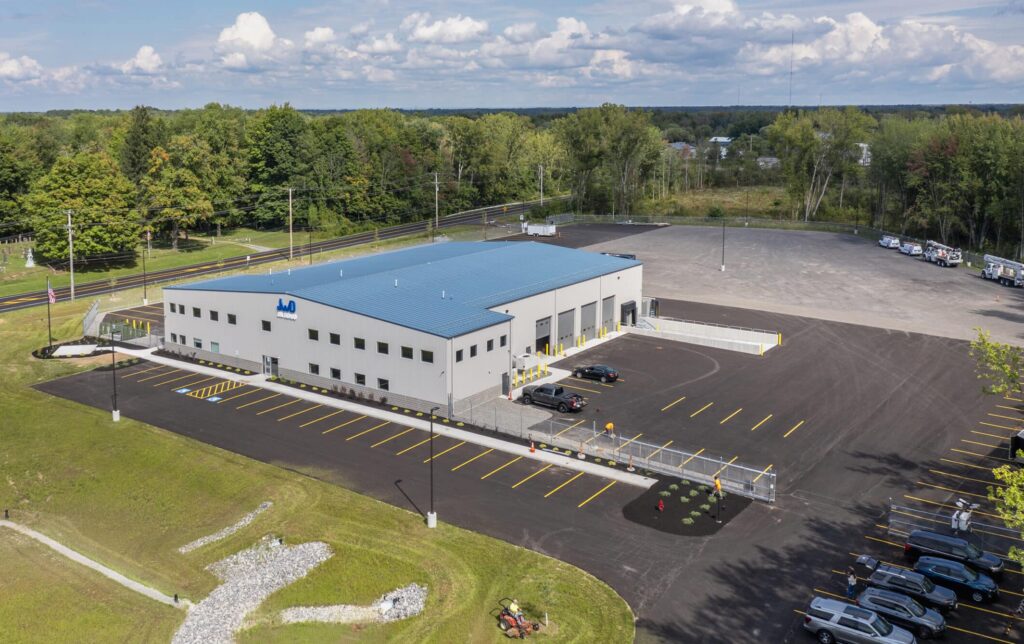
Benefit 2: Low-Maintenance
Siding of any sort requires some maintenance from the building owner or developer, whether it is repainting or even replacing damaged panels. Metal siding is durable enough to resist most environments and harsh weather conditions that tend to age and degrade other types of siding. Improvements in sheet coating systems have resulted in very long-term warrantees from manufacturers; 20 to 30 years is not uncommon.
Unlike wood, metal panel siding is fully resistant to insects and moisture. Wood tends to absorb moisture from rain and water vapor, causing it to expand and deform. This causes additional maintenance on a continual basis. If properly coated with corrosion resistant paint, metal siding can be impervious to moisture, which also protects the inner layers of a building’s walls.
Benefit 3: Energy Efficient
Metal panel siding can work within your building’s envelope to provide better efficiency. If your construction team installs it correctly, it can result in a very airtight solution.
Additionally, metal siding can come with reflective coatings that reflect heat or dark colors to absorb heat, depending on your climate needs. Aluminum metal siding conducts far less heat than other types of metals, making it an attractive choice for areas where both heat and cold are concerns for equal parts of the year, like Upstate New York.
Here in Syracuse, Watertown, Rochester, and Utica we have extreme heat and humidity in the summer and very cold, windy, and snowy winters. This is why metal siding is a strong option because it works on both ends of the weather spectrum.
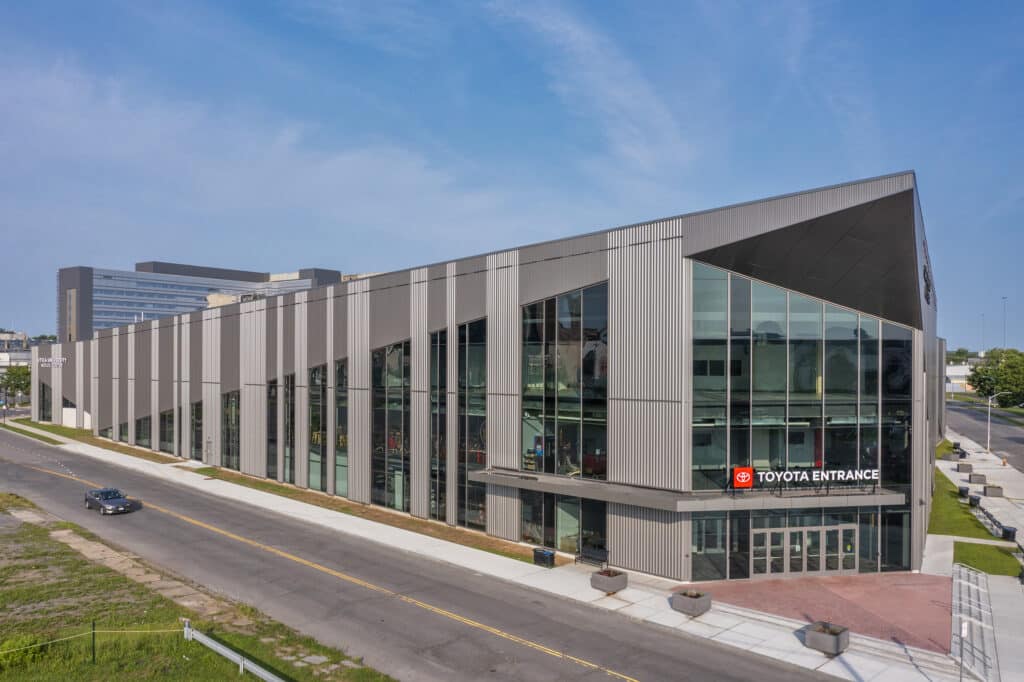
Benefit 4: Sustainability
Metal siding is perhaps the most sustainable siding material because when it reaches the end of its life cycle, it can be completely recycled. Using metal siding panels constructed of recycled materials helps building owners meet the criteria for LEED® or Green Building credits for recycled content and construction waste management. These types of green building standards are beneficial as owners look to earn financial backing and credits on development projects.
In Summary
The appeal of metal panel siding continues to grow year after year among architecture, engineering, construction, and development firms. These 4 benefits have made it a much more attractive option for building owners and developers.
The advantages, including longevity, reduced maintenance, energy efficiencies, and sustainability, far outweigh benefits of other types of siding for your building. The new additions and varieties of styles make it a “no-brainer” for many in the field.
Interested in learning more from the experts at our integrated design-build firm in Upstate NY? Subscribe to our blog below. Have a question for our thought-leaders at VIP Structures? Reach out to us using the contact form.

